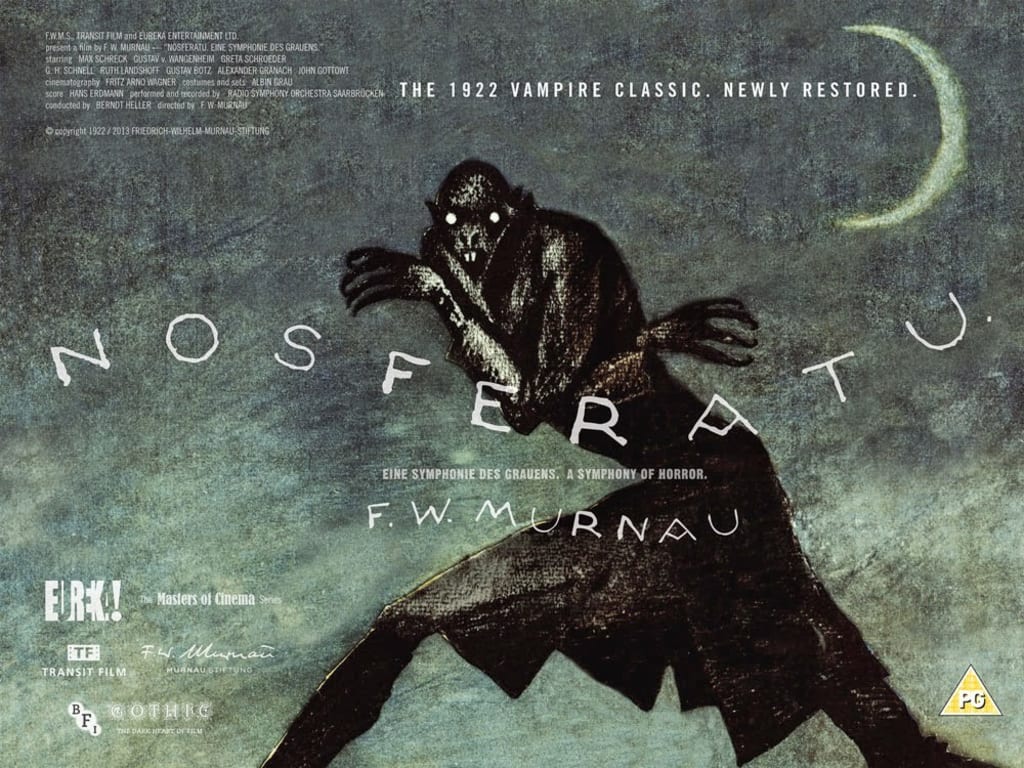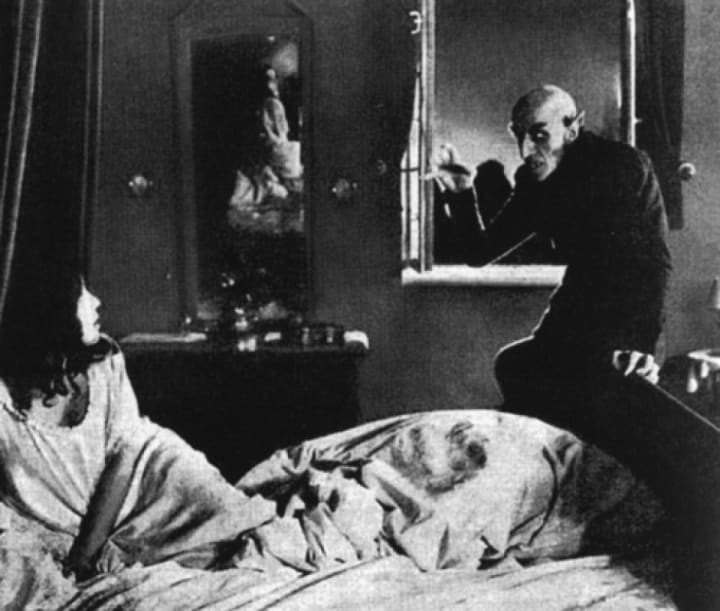A Filmmaker's Guide to: Nosferatu (1922)
An Appreciation of Cinema (Pt.10)

In this chapter of ‘the filmmaker’s guide’ we are going to explore some of the films that have changed our outlook of the possibilities in cinema in some way, shape or form. These can include, but are not limited to: revolutionary cinematography, narratives that challenge the social structure and the common view, trademark styles of auter cinema, brilliant adaptations of novels and other works, films of philosophical value and films that touch our hearts and souls with their incredible underlying messages and morals. Within each of the films in this chapter there is a certain something that makes them special and a certain something that makes them linger long after we have watched them for the first time. Lasting impressions are difficult to create, but I think that the films we will briefly touch on in this chapter are some of the films we will never ever forget.
Nosferatu (1922) dir. by F.W Murnau

As one of the most famous films of German Expressionism and one of the most famed horror films in all of human history, this film came about before the time of the Warner Bros. Vitaphone and therefore it did not have any recorded sound whatsoever. Instead, it is a symphony that plays in the background as the film progresses. The symphony itself is unmistakably designed to scare and chill the audience. It is an amazing musical piece and as the background music to this incredible film, it makes all the more difference when you see Nosferatu come out of the shadows to the strange and atmospheric sounds created by the orchestra. However, it is not only the music that makes for an incredible viewing experience. It is also the way in which the film has been made and the style in which we see it. This refers to the acting, the shadowing, the light and dark, the story and yes, even the title cards.

When we first watch this film we feel almost overwhelmed by the greatness of the atmosphere. You cannot believe that it is as early as 1922 because the preciseness of the characterisation of Nosferatu through his appearance and actions is pinned down entirely. The music would only enhance this experience, but even played on its own it is just as unsettling. I believe that it is this film that started off the sociopath-craze on film (well, until the Hayes’ Code tried to kick it to the curb) and after the Hayes’ Code was made dormant, we would get these same movies but with more ambiguous endings. In reality though, it really began with Nosferatu (1922). The unhealthy obsession with the woman, the strangeness of the man locked in the cell who calls Nosferatu “master” and even the will of the estate agent not to listen when he is told of the oddities about where he is going. There are many things, through all of the characters, that represent the way in which modern cinema would construct the sociopathic tendencies of more grotesque characters such as Hannibal Lecter and Patrick Bateman.

The shadowing of the film has definitely inspired many a film after it. Copied by the likes of Tim Burton, Stanley Kubrick and even James Wan, this iconic method of shadow in “Nosferatu” (1922) has become one of horror’s most unsettling and uncomfortable atmosphere-inducing scenes. I think you also have to agree that in every single way possible, the F.W Murnau classic, constructed mostly of greatly intense melodrama and very uncomfortable scenes starring Max Schrek as Nosferatu the Vampire is superior to the terrible remake that was made during the 70s. I can’t think of anything more insufferable than sitting through an Isabel Adjani movie. Anyways, F.W Murnau’s name became synonymous with not only the German Expressionist culture that had its ladder balancing the acts of Fritz Lang and Robert Weine on its rails - but also synonymous with the culture of horror film that was to come. People like Sir Alfred Hitchcock and George A. Romero would take from Murnau’s incredible influence and create something for their own audiences that was there to scare. Just as “Nosferatu” (1922) can still send shivers down your spine, so can the likes of “Psycho” (1960) with all it’s shadowing and fades into the darkness that are trademarks of Murnau.

About the Creator
Annie Kapur
200K+ Reads on Vocal.
English Lecturer
🎓Literature & Writing (B.A)
🎓Film & Writing (M.A)
🎓Secondary English Education (PgDipEd) (QTS)
📍Birmingham, UK






Comments
There are no comments for this story
Be the first to respond and start the conversation.